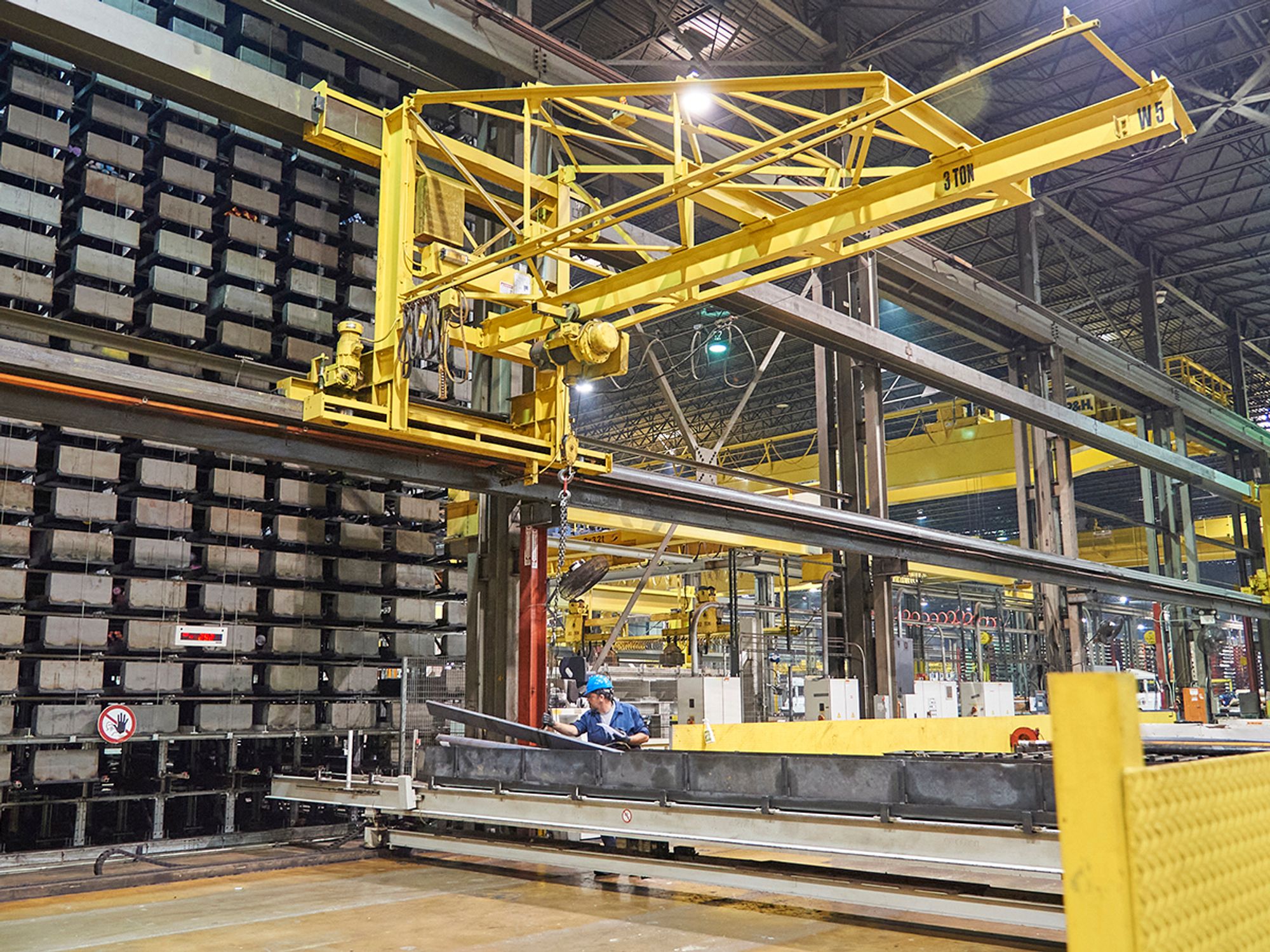InstituteCranes, Lifts, and ScaffoldingOverhead CranesCranes, Lifts, and ScaffoldingIn Depth (Level 3)EnglishAnalysisFocus AreaUSA
Employer requirements
['Cranes, Lifts, and Scaffolding']

- The OSHA standard requires covered employers to keep employees safe from crane-related hazards by following and communicating proper procedures for design, installation, inspection, maintenance, and use.
In general, the standard requires covered employers to:
- Ensure proper design specifications are followed during installation. Employers should make sure that overhead cranes constructed after August 31, 1971, meet the design specifications of the American National Standards Institute (ANSI)/American Society of Mechanical Engineers (ASME) standard Safety Code for Overhead and Gantry Cranes, ANSI B30.2.0-1967. The most recent version of this standard is ASME B30.2-2022, Overhead and Gantry Cranes.
- Verify that cranes that are modified are re-rated. Employers should make sure that the modifications and the supporting structure are checked thoroughly for the new rated load by a qualified engineer or the equipment manufacturer. The crane should be tested and the new rated load displayed on each side of the crane.
- Allow only designated personal to operate a crane. There aren’t any specific requirements in the standard for employee training. However, there is the requirement that only “designated” employees can run the crane. Designated means selected or assigned by the employer or the employer’s representative as being qualified to perform specific duties.
- Follow maintenance procedures. Employers should verify that proper maintenance procedures are being followed. This includes preventative maintenance and adjustments and repairs.
- Perform frequent inspections. Employers should inspect cranes frequently and periodically to ensure the safety of employees and the facility. The intervals are dependent upon the nature of the critical components of the crane and the degree of their exposure to wear, deterioration, or malfunction. Frequent inspection is usually done on a daily to monthly interval. Some items that need to be inspected include:
- Operating mechanisms for excessive wear or improper adjustment.
- Air or hydraulic system lines, tanks, valves, pumps for leakage or deterioration.
- Crane hooks for deformation or cracks. A visual inspection on these hooks is required daily, and a written monthly inspection must also be done and kept on file.
- Hoist chains for wear, twisting, distortion. A visual inspection on these chains is required daily, and a written monthly inspection must also be done and kept on file.
- Rope reeving for noncompliance with manufacturer’s recommendations.
- Perform periodic inspections. Periodic inspections are done at 1- to 12-month intervals. This is more of a complete inspection and includes the frequent inspection requirements in addition to looking for the following:
- Deformed, cracked, or corroded members.
- Loose bolts or rivets.
- Cracked or worn sheaves and drums.
- Worn, cracked, or distorted parts such as pins, bearings, shafts, gears, rollers, and locking and clamping devices.
- Excessive wear on brake system parts, linings, pawls, and ratchets.
- Load, wind, and other indicators over their full range, for any significant inaccuracies.
- Gasoline, diesel, electric, or other power plants for improper performance or noncompliance with applicable safety requirements.
- Excessive wear of chain drive sprockets and excessive chain stretch.
- Electrical apparatus, for signs of pitting or any deterioration of controller contactors, limit switches, or pushbutton stations.
- Inspect the wire rope. In addition to the frequent and periodic inspection requirements listed above, all the wire rope on the crane must be inspected at least once a month with a certification record prepared showing the exact ropes inspected and the name of person doing the inspection. The record must be kept on file. Wire rope installed on a crane that has been idle must be inspected before the crane is used.
- Handle the load. The crane should never be loaded beyond its rated load except for test purposes. Use only the load block hook to lift the load, not the hoist chain or rope. Use a sling to attach the load to the load block hook.
- Move the load. The load must be balanced in the sling. Users must verify that the rope is not twisted or kinked.
- The crane should not be used for side pulls unless a responsible person authorizes it.
- Loads must not be carried over people.
- The brakes should be tested each time a load approaching the rated load is handled (by raising the load a few inches and then applying the brakes).
- During a multi-lift operation (two or more cranes are lifting a load), one qualified person must be in charge and analyze the operation and instruct personnel in proper positioning, rigging of the load, and movements to be made.
- Test the hoist limit switch. The upper limit switch should be tested under no load at the beginning of each shift. If it’s not operating properly, the appointed person should be notified. “Appointed” means assigned specific responsibilities by the employer or the employer’s representative.
